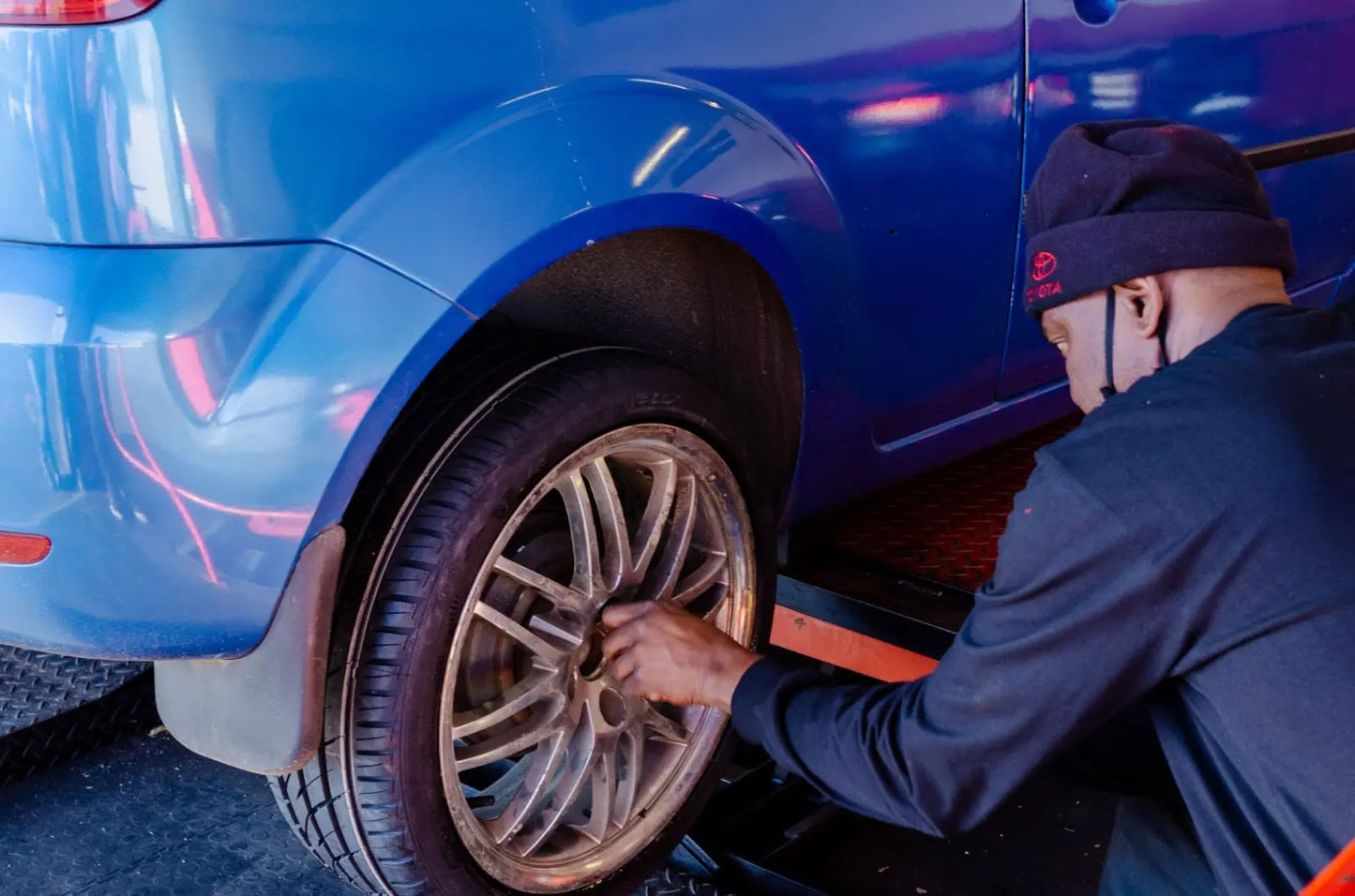
They get old, they get weak, and they affect your vehicle more than you may think when underperforming.
We know it’s never exactly fun to have to buy new tires (unless you’re really treating yourself and getting some awesome performance tires).
But luckily, there are a number of ways to know whether your tires are good to go or need a replacement, so let’s jump in! Read on to learn more in this article of shine armor blog!
related products in shine armor:
- Graphene Ceramic Spray
- Fortify Quick Coat
- Revive Car Scratch Remover
- Graphene Ceramic Nano Glass Coating
- Anti-Fog Hero
- Car Upholstery and Interior Cleaner
How Do They Look
One of the easiest ways to tell if you might need tires is to just look at them.
If you notice cracks in the rubber along the sidewall or see that your tread is worn down or uneven, those are good indicators that it’s time for a new set.
But if your tire is just looking a little dusty or like it’s lost its shine, you probably don’t need to go shopping for tires.
Instead, try using Pristine Tire Shine Gel. It’s extremely easy to use and gets your tires looking like they just rolled off the lot with a deep black, glossy look to them.
The Quarter Test
Most people have heard of the Penny Test, but in case you haven’t: Test your tire tread by sticking a penny between the rubber walls with President Lincoln's head facing down towards the tire. If you can still see the top of his head, it’s time for some new tires.
The tread that would normally block your view of his noggin has been worn down to dangerous levels, meaning that your tires have lost most of their traction. Especially if you live somewhere where it rains at all (most places), you really want to make sure that you can rely on your tires to not skid around.
However, the Penny test has become a bit outdated. It’s now recommended that you trust our first president on the quarter instead of Honest Abe.
The gap between Lincoln's head and the edge of a penny is 1/16ths of an inch, which pretty much means you need to go buy new tires tomorrow.
But the gap between President Washington's head and the edge of a quarter is 2/16ths. We know this doesn’t sound like much of a difference, but when your tread is at this point, you still have time to do a little shopping and get yourself prepared to drop some coin on new tires.
Waiting until your tread is down to 1/16ths is sort of like waiting to get in the lifeboat when your ship has already sunk -- cutting it a bit too close.
How Old Are They?
Tires have a shelf-lifespan and an action-lifespan, and they’re usually not far apart.
Most tire manufacturers will suggest replacing your tires around six to eight years after installation, depending on mileage.
But tires also wear down gradually over time regardless of use.
Tires that get close to ten years in age begin to break down and crack. This makes them extremely unreliable and dangerous to not only you but the drivers around them.
The rubber compound deteriorates and separates the inner rubber walls from the tread, meaning that your tires will literally fall apart -- even if you’re under their suggested mileage.
You might think, “Well, I know when I bought them, so I know how old they are!” But unfortunately, it isn’t that simple sometimes.
Tires don’t typically sit for long on the shelf, but it could be enough time that their old age is getting closer than you assume. So how do you know exactly how old your tires are?
Luckily, most tire companies (actually all U.S. manufacturers) are required to print the tire date of manufacturing onto the sidewall, called the DOT Code.
The DOT Code is typically four numbers stamped into the front-facing side of your tire that look like this:
2519
Take a peek at your tires, and you’ll see a ton of information, but you’ll find these numbers easily enough. So what do they mean?
The DOT Code represents the week and the year the tires were built. That way, we can know exactly how old they are. The first pair is the week; the second pair is the year.
So, in this case, 25 represents the week, so we know they were made in the 25th week of the year. And the second pair is 19, meaning the year 2019.
You could do the math to figure out when the 25th week of the year was, or you could use this website to help figure it out!
Make Some Noise
Anytime you’re driving in your car, and you hear an unfamiliar noise, it’s always accompanied by a sinking feeling in your stomach because it’s basically never good news.
But trust us when we say you would much rather hear that noise the first time it happens instead of covering it up with your music and letting it go undetected. That only leads to your problems getting worse without you knowing!
When it comes to your tires, you want to listen for a loud vibrating sound, typically pretty deep and rumbly. This sound is usually caused by runout, which is when your tires aren’t spinning in a perfect circle.
While runout can sometimes be resolved by getting your tires rotated at your nearest shop, it can also be a sign that your rubber is ready for retirement.
Lights in the Dash
You’re on your way home from running errands when suddenly a light jumps on in your dash. It looks like a little exclamation point inside of a strange bowl, and you’re not entirely sure if it means that your car is about to break down or not.
Don’t worry; you won’t break down. At least not immediately. This light is your Tire Pressure Monitoring System at work, and it’s telling you that one or more of your tires has dropped below standard air pressure.
This isn’t a death sentence, but it is something you want to take care of right away. Most gas stations will have air pumps for you to refill your tires by yourself, or most tire shops will do it for free if you catch them at a slow time.
But what you do want to look out for is if your TPMS light continuously comes on, even after refilling your tires.
This could mean that you have a leak in the rubber walls, and your tire is just slowly releasing air. You can get this taken care of with a patch and get some more miles out of your tires, but definitely take some sort of action if you realize you have a leak. Leaky tires can lead to freeway blowouts which are obviously very, very bad.
Tired Tires
Maintaining your car’s tires and paying attention to them when they need replacing is of the utmost importance.
Fortunately, most of the time, your car and your tires will alert you to let you know when the time has come. Whether it's a light in the dash or a loud noise coming from one of your wheels when you’re on the road, there are signs to pay attention to.
But you should stay diligent in checking your tires before they get to any of these signs so that you can be prepared. Check your tread with President George Washington, and know when your tires’ birthday is, so you can keep track of how old they are.
Not to mention you can always give your tires a birthday present by shining them with Graphene Tire Shine. Our top-of-the-line advanced formula will have your tires strutting around with confidence.
At Shine Armor, we care about you and your vehicle and want you to be safe and armed with the knowledge you need to keep your car in tip-top shape. Having a reliable set of tires is extremely important, and we know that you’re the type of person who takes their vehicle very seriously.
That’s why we put so much effort into our products and our customers. We care, and we know that you care. Together with your efforts and our formulas, your car is going to be shining safely every time you go out.
Shop by category:
- buy exterior products from shine armor
- buy interior products from shine armor
- Buy Best car detailing kit
References:





